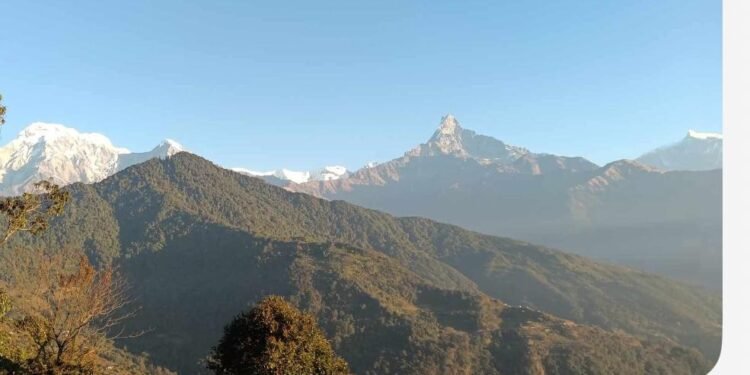Pokhara, Nepal – The iconic Mount Machapuchare, also known as Fishtail, along with several other Himalayan peaks, is losing its pristine white snow cover. Residents who have cherished the breathtaking views of snow-capped mountains for generations are now witnessing these peaks turning black as snow depletes drastically.
Experts point to climate change as the primary driver of this alarming phenomenon. Rising global temperatures are causing glaciers and snow on high-altitude mountains, including Mount Everest, Annapurna, and Dhaulagiri, to melt at unprecedented rates. Additionally, increased pollution, deforestation, and environmental degradation in the region are exacerbating the problem.
The impacts of snow loss on these peaks extend beyond Nepal, with far-reaching consequences for the entire world. The Himalayan region, often referred to as the “Water Tower of Asia,” is the source of major rivers such as the Ganges, Brahmaputra, and Indus. A decline in snow and glacier cover threatens the water supply for billions of people across South Asia, jeopardizing agriculture, drinking water, and energy production.
Furthermore, melting snow contributes to rising sea levels, intensifying the global climate crisis. As glaciers shrink, they release stored greenhouse gases like methane, which accelerate global warming. The long-term effects include increased frequency of extreme weather events, loss of biodiversity, and disruptions to global food systems.
Tourism, a critical economic pillar for Nepal, may also face a significant downturn. The allure of snow-capped mountains draws millions of visitors annually. As the iconic white peaks lose their charm, Nepal’s tourism industry and the livelihoods dependent on it could suffer severe setbacks.
To combat these issues, urgent global and local actions are required. International cooperation to reduce greenhouse gas emissions, adoption of renewable energy, and promotion of sustainable practices are essential to mitigate the effects of climate change. Locally, afforestation, stricter pollution controls, and environmental education can help preserve the Himalayas.
The loss of snow on Himalayan peaks like Machapuchare, Everest, and Annapurna serves as a stark reminder of the interconnectedness of global ecosystems. Protecting these majestic mountains is not just a regional issue it is a global responsibility to ensure water security, biodiversity, and climate stability for future generations.




















